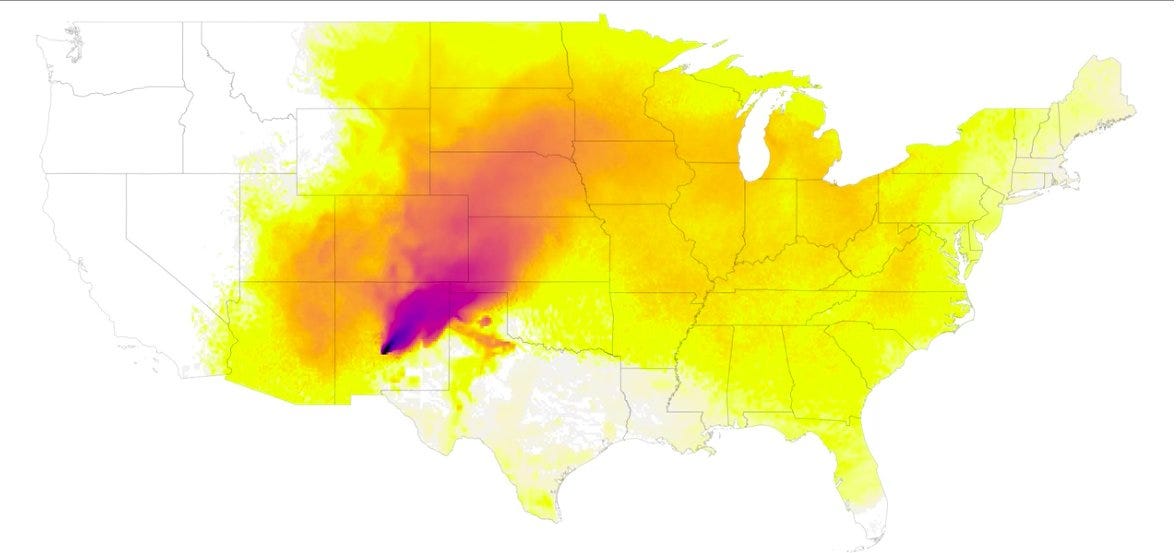Greg Mitchell is the author of a dozen books, including “Hiroshima in America,” and the recent “The Beginning or the End,” and has directed three documentary films since 2021, including two for PBS (plus award-winning “Atomic Cover-up”). He has written widely about the atomic bomb and atomic bombings, and their aftermath, for over forty years.
Reports are far from complete for the weekend, but it appears Oppenheimer is doing very well at the office, although (as predicted) Barbie is earning more money by about two-to-one. Certainly the massive promo has paid off, so far, but we’ll see if the Nolan movie has legs—and what its impact may be on sparking any kind of new debate over nuclear weapons, and their first use against two cities in 1945. I am skeptical, for reasons I have outlined here for the past ten days.
Considering all the serious angles in the movie that could be covered, I had to laugh when I saw the headline at Rolling Stone today: “We Need to Talk About Those ‘Oppenheimer’ Sex Scenes.” But I did get another chuckle out of this:
Early on in Oppenheimer, Professor Oppenheimer is introduced to Tatlock during a Communist Party get-together, and the two immediately click. Cut to a scene of a nude Pugh-as-Tatlock riding Murphy’s Oppie like the end of Dr. Strangelove, only to pause in the action when her eye catches a book on his shelf: the Bhagavad Gita, a Hindu scripture that was a favorite of Oppenheimer’s. She turns to a section and, as she is on top of him, has him read it to her: “Now I am become Death, the destroyer of worlds” — a line famously uttered by Oppenheimer about him and his terrifying creation during a 1965 TV broadcast. In lieu of capturing the intensity of Oppenheimer and Tatlock’s affair, it comes off as clumsy and unintentionally funny. Why is Tatlock making Oppenheimer read one of his most famous quotes back to her while fucking him?
The magazine gives Nolan a pass, however, because he hasn’t directed a sex scene before. (Let’s not mention how thinly and poorly he depicts Tatlock overall.) But does that excuse the following?
Blunt’s Kitty is in the room as Murphy’s Oppenheimer is being interrogated by these congressmen over Tatlock and we switch to her perspective, as she envisions Oppenheimer and Tatlock — naked — having sex right in front of her, in that very room, with Pugh’s nude Tatlock grinding on Oppie’s lap. Tatlock locks eyes with Kitty in this fantasy scenario, taunting her. You get what Nolan is attempting here — to convey Kitty’s jealousy over her husband’s extramarital tryst — but the scene is so wildly over-the-top that your eyes will roll back into your head.
If you have missed, here are links for my own articles over the past two days at Mother Jones and at the L.A. Times. Today the Times opinion editor reflects on my piece for them: “Thinking about 'Oppenheimer' as the planet feels like it's dying.” Note: I’ll be talking about my book and many of the issues I’ve raised here in the past ten days on Democracy Now! on Monday just after 8 a.m. ET. If you haven’t as yet, you can still subscribe to this newsletter and it’s still free:
Before anyone, I’d guess, I raised the question of whether Christopher Nolan, in his Oppenheimer, would handle the issue of the deadly and then drifting radiation release, and then cover-up, that followed the first test of the atomic bomb at the Trinity site. This never comes up in Hollywood depictions of the test. In fact, these movies (going back to the first one) love to focus on Trinity, and not Hiroshima and Nagasaki, because no one died that day. Nolan, as I feared, was no different.
As I’ve written, here and in my book The Beginning or the End, General Groves (played with sympathy in the movie by Matt Damon) refused to evacuate or warn villagers living nearby, and then with Oppenheimer’s help kept studies hidden in the months that followed. In fact, Nolan makes almost no mention of the bomb’s revolutionary new radiation component.
Now there’s a troubling new study. Here from the New York Times:
A new study, released on Thursday ahead of submission to a scientific journal for peer review, shows that the cloud and its fallout went farther than anyone in the Manhattan Project had imagined in 1945. Using state-of-the-art modeling software and recently uncovered historical weather data, the study’s authors say that radioactive fallout from the Trinity test reached 46 states, Canada and Mexico within 10 days of detonation….
The findings could be cited by advocates aiming to increase the number of people eligible for compensation by the federal government for potential exposure to radiation from atmospheric nuclear explosions.
The drift of the Trinity cloud was monitored by Manhattan Project physicists and doctors, but they underestimated its reach….
Census data from 1940 shows that as many as 500,000 people were living within a 150-mile radius of the test site. Some families lived as close as 12 miles away, according to the Tularosa Basin Downwinders Consortium. Yet no civilians were warned about the test ahead of time, and they weren't evacuated before or after the test.
The article closes with this quote: “The extent to which America nuked itself is not completely appreciated still, to this day, by most Americans, especially younger Americans,” As for the Oppenheimer “test”—Nolan failed that.





